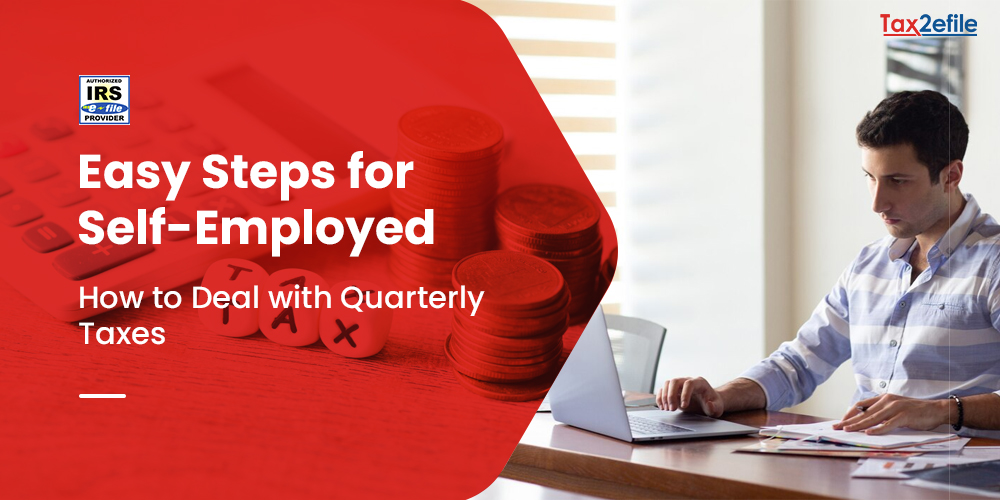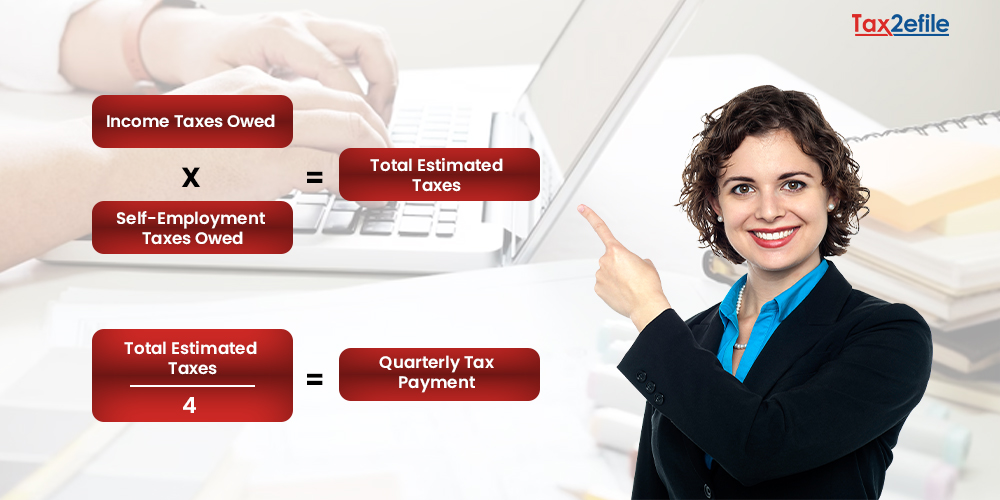- January 25, 2024

The IRS recommends that self-employed taxpayers have to pay their quarterly tax payments and meet the key IRS deadlines. Independent contractors, sole proprietors, and members of the partnership businesses are expected to pay their quarterly estimated taxes.
The quarterly taxes will include the self-employment taxes and the income tax on the profits that the business has made, apart from their regular income. If the income of the person increases during the tax year, they will be able to adjust the quarterly payments accordingly. Taxpayers will be able to submit their quarterly payments online through electronic portals or submit their tax returns using paper forms.
Who Should be Filing the Quarterly Taxes
Self-employed individuals have a host of benefits, they don’t have to report their work and their income to their superiors. They also have the freedom to work on their own schedule. Self-employed individuals also enjoy a host of other tax benefits. They can pay their taxes quarterly, instead of having to pay with every paycheck as that of W-2 employees.
If you work as a self-employed individual or if you are a small business owner, you have to pay the estimated taxes on a quarterly basis. A person is considered to be self-employed if you are working as an independent contractor, sole proprietor, member of a partnership that conducts business, or a person who runs their own business on their own, even as a part-time employee.
For self-employed individuals, the IRS suggests a pay-as-you-go income tax system. Thus, these employees should pay the taxes as they earn income. It also charges penalties for underpayment of taxes and for late payment of taxes, even if they are expecting a refund from the IRS. IRS follows a few rules to determine if the taxpayer has to make quarterly tax payments. These rules are as follows.
- The taxpayer expects to owe more than $1000 after reducing the tax credits and tax withholdings while filing the tax return.
- The taxpayer expects the tax credits and withholding to be less than 90% of the estimated tax liability for the tax year.
- The taxpayer expects the tax withholding to be 100% of the previous year’s tax liability.
- This 100% becomes 110% of the adjusted gross income will increase to $150,000.
How to Calculate Self-Employment Estimated Tax Payments
- Your self-employment net income could be calculated by type of income source which includes freelancers, business activities, and other self-employed incomes.
- You are allowed to deduct the eligible miscellaneous expenses such as business travels and other adjustments to obtain your net self-employment income

Calculate Self-Employment Tax
- Self-employment individuals are the contributions of both the employer and employee portions of Social Security and Medicare taxes. This is known as the self-employment tax.
- The common self-employment tax rate would be 15.3% of your net annual income earned. It includes 12.4% for Social Security and 2.9% for Medicare.
- Consider the eligible deductions and credits that can reduce the taxable income
- Multiply your net taxable income by to self-employment tax rate to discover your estimated taxes
- Estimated tax payments are typically made quarterly. Divide your total estimated tax liability by four to determine the amount you should pay each quarter.
How to pay Quarterly Taxes
Self-employed individuals will be paying their taxes four times a year, rather than paying a single tax payment at the end of the year. They will generally be paying self-employment tax at the rate of 15.3% and income taxes for the federal and the state. The self-employment taxes will cover their payment towards their Medicare and Social Security.
Freelancers, independent contractors, gig workers, and business owners should pay these quarterly taxes if self-employment is their sole income. If the self-employed individual expects to owe $1000 in taxes from self-employed income and if they have made $400 in self-employed income, then they should pay the quarterly taxes with the IRS. The IRS also expects to pay taxes as they gain income and will levy penalties for late payments and underpayment of taxes.
Taxpayers can make payments either online or by submitting paper forms to the IRS. They can also choose to e-file their tax returns with IRS-authorized portals like tax2efile. Before filing the returns, it is important to keep the 4-digit PIN and taxpayer identification number handy, along with other income details before filing returns.
Tax2efile For Self-Employment E-Filing
Tax2efile ensures a smooth tax E-filing experience for taxpayers handling their self-employment filings. As an IRS-authorized tax filing service provider, we deliver invaluable services through our user-friendly interface. Start your tax filing journey now by registering with us to access a range of benefits and simplify your tax-related tasks. Our platform is designed to streamline the process, making it convenient and efficient for individuals navigating self-employment taxes.